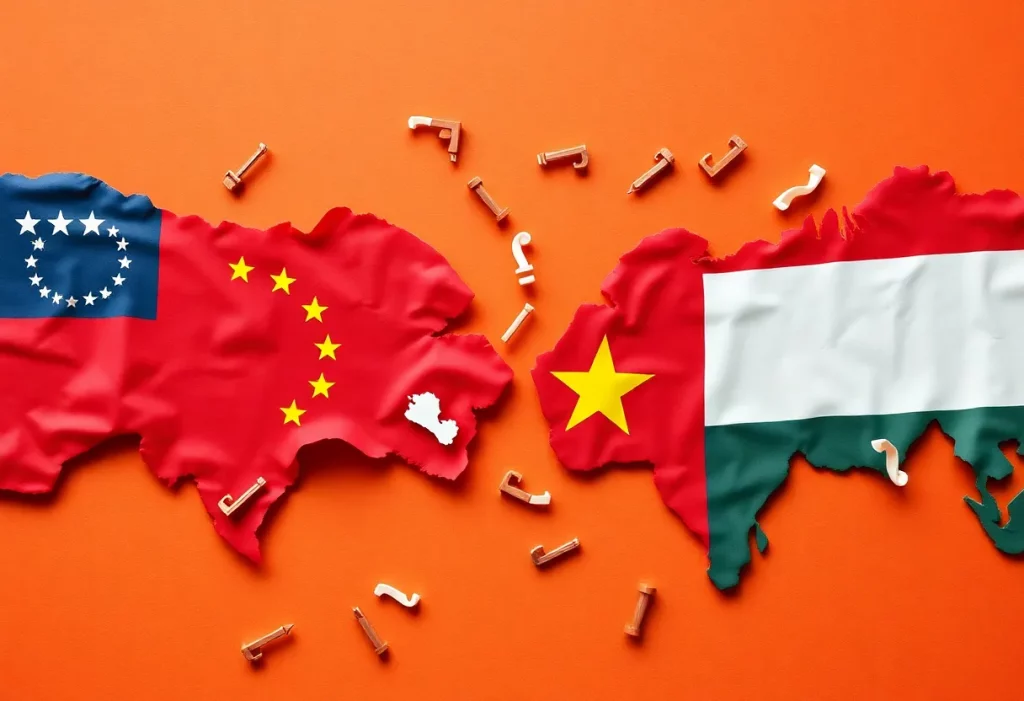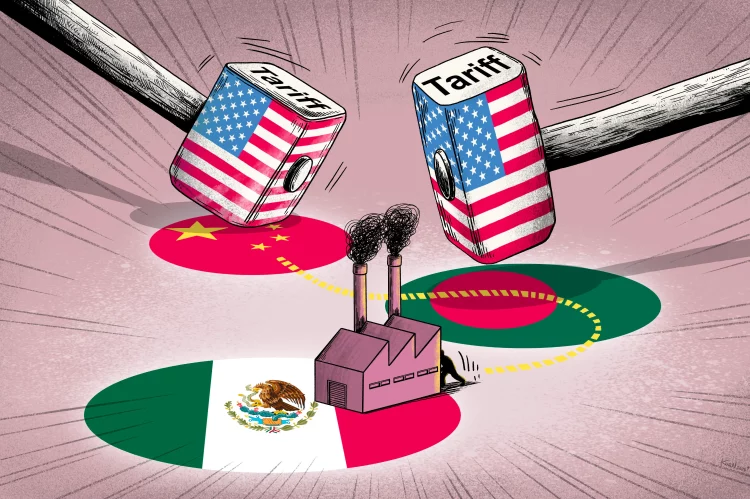Introduction: The Importance of Trade Agreements in 2025
Trade agreements have always played a crucial role in shaping global economic relations. They are essential tools for countries to establish trade rules, reduce barriers, and foster closer economic ties. In 2025, as nations continue to navigate a post-pandemic recovery, trade agreements are even more pivotal in determining the direction of global stock markets. New deals and negotiations are influencing investor sentiment, economic growth, and the performance of specific sectors. With the rise of new geopolitical tensions and changing trade dynamics, these agreements can create winners and losers in the global marketplace.
In this article, we will examine recent trade agreements and negotiations and evaluate their potential impact on international equities and investor sentiment. We will also discuss how market participants can adjust their strategies in response to these evolving trade dynamics.
Recent Trade Agreements and Negotiations
1. The U.S.-China Economic Cooperation Agreement (2025)
In 2025, the relationship between the U.S. and China continues to be a central focus of global trade. After years of tariff wars, both countries have moved towards a new phase of economic cooperation. The U.S.-China Economic Cooperation Agreement, signed earlier in the year, is designed to reduce tensions and enhance mutual economic interests. This agreement aims to reduce tariffs on certain goods, promote technological collaboration, and provide a framework for addressing intellectual property issues. It also includes provisions for trade in services, agricultural products, and clean energy.
Impact on Markets:
The trade agreement has had an immediate positive effect on global markets, particularly in sectors such as technology, consumer goods, and agriculture. U.S. technology giants, including Apple and Microsoft, have seen their stock prices rise as the agreement paves the way for increased access to Chinese markets. Additionally, the agricultural sector has benefitted, with U.S. farmers able to secure favorable terms for exports to China. Investor sentiment has been generally positive, as the agreement is seen as a step toward stabilizing U.S.-China relations and reducing uncertainty in global trade.
However, there are still concerns regarding the long-term sustainability of the agreement, particularly in light of ongoing tensions over issues like human rights and cybersecurity. As a result, investors remain cautious about fully embracing the deal’s potential benefits.
2. The EU-Asia Trade Partnership (2025)
In 2025, the European Union (EU) expanded its economic influence through the EU-Asia Trade Partnership, a comprehensive agreement aimed at enhancing trade and investment ties between the EU and key Asian economies, including Japan, South Korea, India, and Vietnam. This agreement is designed to streamline trade in goods, services, and investment, creating a more predictable and transparent trading environment for European businesses.
Impact on Markets:
The EU-Asia Trade Partnership has bolstered investor confidence in both European and Asian equities. For European companies, the agreement opens new markets for their products and services in Asia, which has historically been a challenging region for foreign businesses. Asian companies, on the other hand, are poised to benefit from easier access to the EU market, particularly in sectors such as automotive, technology, and pharmaceuticals.
Investor sentiment in European stocks has improved, with particular interest in companies with a significant presence in Asia, such as Siemens, Volkswagen, and L’Oréal. Asian stocks have also rallied, particularly in emerging markets like Vietnam, which is seeing an influx of foreign direct investment due to the agreement.
3. The Comprehensive and Progressive Agreement for Trans-Pacific Partnership (CPTPP)
The CPTPP, a trade pact involving 11 countries from the Pacific Rim, has seen new countries join the agreement in recent years. The CPTPP is now a key driver of trade in the region, and its expansion in 2025, with the inclusion of new members such as Indonesia and the Philippines, has raised its significance on the global stage. The agreement aims to reduce trade barriers, improve labor and environmental standards, and promote innovation across industries such as agriculture, digital services, and manufacturing.
Impact on Markets:
The CPTPP has been a boon for emerging market economies, especially in Southeast Asia. Countries like Vietnam, Malaysia, and Thailand have seen significant increases in exports and foreign investment. For investors, this represents an opportunity to capitalize on the growing markets in these nations, particularly in the manufacturing and tech sectors.
Stocks of companies in these countries have experienced substantial gains, while multinational corporations, particularly those in the manufacturing sector, have benefited from reduced tariffs and smoother supply chains. On the other hand, markets in non-member countries are seeing some negative effects, as they are excluded from the agreement’s trade benefits, which can lead to a competitive disadvantage in the long run.

4. The Africa Continental Free Trade Area (AfCFTA)
The AfCFTA, launched in 2021, is gaining momentum in 2025 as more African countries sign on and work to implement the agreement’s provisions. The goal of the AfCFTA is to create a single continental market for goods and services, promote intra-Africa trade, and enhance regional value chains. The agreement is seen as a critical step in integrating Africa’s diverse economies and boosting trade across the continent.
Impact on Markets:
The AfCFTA is expected to have a profound impact on African markets, particularly in industries such as agriculture, infrastructure, and consumer goods. With lower trade barriers and more access to regional markets, businesses operating in Africa are poised for significant growth. African stock markets, such as those in Nigeria, Kenya, and South Africa, have seen increased investor interest as a result of the AfCFTA’s promise to stimulate trade and economic development.
While the full benefits of the AfCFTA will take time to materialize, the agreement is seen as a catalyst for long-term growth in the region, making it an attractive area for foreign investment. However, political instability in certain African nations poses a risk to investors, which requires careful consideration before committing to African equities.
Evaluating the Impact of Trade Agreements on Global Equities
1. Stock Market Reactions to Trade Agreements
Trade agreements typically lead to market rallies, as investors view these deals as reducing uncertainty and opening up new growth opportunities. The positive effects are most evident in sectors that directly benefit from the agreement, such as technology, agriculture, and consumer goods. Conversely, sectors that face competition from foreign companies may experience a decline in stock prices.
In the short term, stock market reactions are often driven by news and announcements regarding trade deals. When agreements are signed or positive developments occur, stocks in the affected sectors tend to rise. Conversely, any setbacks or delays in negotiations can lead to market pullbacks, particularly in the sectors most vulnerable to these changes.
2. Long-Term Effects of Trade Deals
While trade deals often lead to immediate market reactions, their long-term effects are more difficult to predict. Over time, the benefits of trade agreements depend on how well countries implement their provisions and whether they address the underlying issues of trade imbalances, regulatory barriers, and intellectual property protection. For example, the long-term success of the U.S.-China Economic Cooperation Agreement will depend on how well both countries adhere to the terms and whether new tensions arise that could undermine the deal’s benefits.
Moreover, trade agreements can shift global supply chains, creating both opportunities and challenges for companies. As businesses adjust to new trade rules and regulations, the sectors most impacted by the deals may experience sustained growth or decline. For example, the EU-Asia Trade Partnership has strengthened European companies’ presence in Asia, but some European industries may face increased competition from Asian manufacturers as they gain better access to European markets.
3. Impact on Investor Sentiment
Investor sentiment is often shaped by the uncertainty surrounding trade agreements. When negotiations are successful, investor confidence tends to increase, leading to a more positive outlook on global stock markets. On the other hand, when trade talks stall or fail, investor sentiment can turn negative, leading to volatility and risk aversion. In 2025, the ongoing U.S.-China trade negotiations and the success of the EU-Asia Trade Partnership have generally improved investor sentiment, boosting global equities.
However, the geopolitical undercurrents of trade deals cannot be ignored. Investor sentiment may shift quickly if countries involved in a trade agreement experience political instability or if the agreement leads to unforeseen consequences. For example, while the AfCFTA is seen as a positive development for Africa, political unrest in member countries could dampen investor enthusiasm in the region.
Conclusion: Trade Agreements as a Driving Force for Global Markets
In 2025, trade agreements continue to shape the global economic landscape, influencing stock market performance and investor sentiment. From the U.S.-China Economic Cooperation Agreement to the expansion of the CPTPP and the AfCFTA, these deals are creating new opportunities for global growth. Investors must remain vigilant, assessing how these agreements affect specific sectors and regions, while also keeping an eye on the long-term sustainability of these trade partnerships.
By carefully navigating the implications of trade deals, investors can position themselves to benefit from the growth in emerging markets, capitalize on new opportunities in established economies, and mitigate risks associated with geopolitical instability. As global trade continues to evolve, staying informed about these agreements and their effects will be critical for maintaining a successful investment strategy.














































